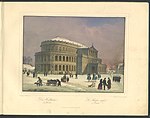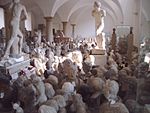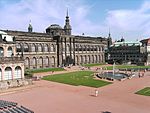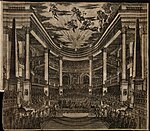Semperoper

The Semperoper (German pronunciation: [ˈzɛmpɐˌʔoːpɐ] (listen)) is the opera house of the Sächsische Staatsoper Dresden (Saxon State Opera) and the concert hall of the Staatskapelle Dresden (Saxon State Orchestra). It is also home to the Semperoper Ballett. The building is located on the Theaterplatz near the Elbe River in the historic centre of Dresden, Germany. The opera house was originally built by the architect Gottfried Semper in 1841. After a devastating fire in 1869, the opera house was rebuilt, partly again by Semper, and completed in 1878. The opera house has a long history of premieres, including major works by Richard Wagner and Richard Strauss.
Excerpt from the Wikipedia article Semperoper (License: CC BY-SA 3.0, Authors, Images).Semperoper
Theaterplatz, Dresden Innere Altstadt (Altstadt)
Geographical coordinates (GPS) Address Phone number Website External links Nearby Places Show on map
Geographical coordinates (GPS)
| Latitude | Longitude |
|---|---|
| N 51.054444444444 ° | E 13.735277777778 ° |
Address
Semperoper
Theaterplatz 2
01067 Dresden, Innere Altstadt (Altstadt)
Saxony, Germany
Open on Google Maps











